Blocking in football is a crucial aspect of the game, especially for the offensive line. Are you looking to understand the different types of blocking techniques used in football? This guide provides a comprehensive overview of various blocking techniques, offering clear explanations and examples. At CAUHOI2025.UK.COM, we strive to provide accurate and easily understandable information, helping you grasp the nuances of football.
Understanding Football Blocking Techniques
Blocking in football involves a set of techniques used by offensive players to protect the quarterback and create running lanes for the running back. These techniques require strength, agility, and coordination. Let’s explore the various types of blocks that offensive linemen execute.
1. Trap Block
The Trap block involves leaving a defensive lineman unblocked initially and then “trapping” him with another lineman who comes from the side to block him. This technique is often used to create a running lane inside the defensive line.
- Execution: An offensive lineman or fullback aims for the upfield shoulder of the defensive lineman to maintain inside leverage.
- Purpose: Typically used in plays like Trap and Wham to create a surprise blocking angle.
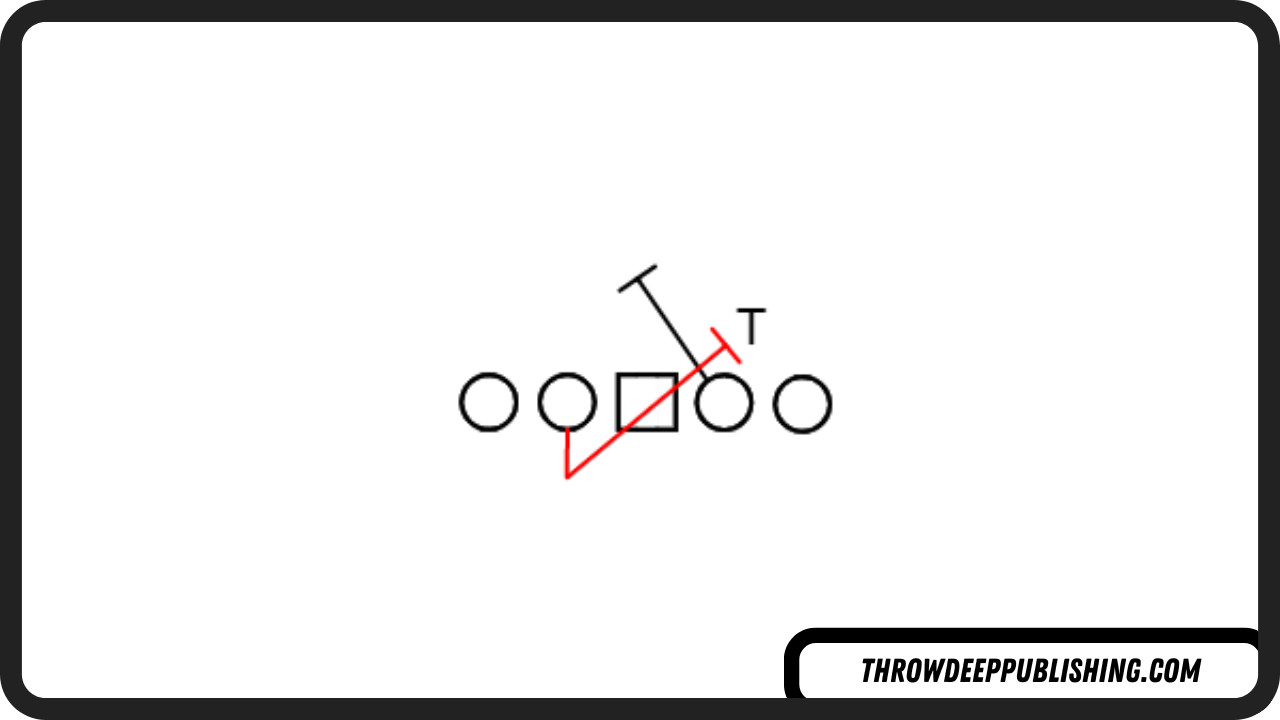 Trap Block
Trap Block
The Right Guard leaves the 3-tech unblocked, and the Left Guard pulls to trap the Defensive Tackle, creating a running lane.
2. Base Block
Base blocks are fundamental 1-on-1 blocks where a blocker engages directly with a defender. These blocks are critical in both run and pass protection.
- Execution: The blocker must establish and maintain inside leverage against the defender.
- Challenge: These blocks are often considered difficult because the blocker has no immediate help.
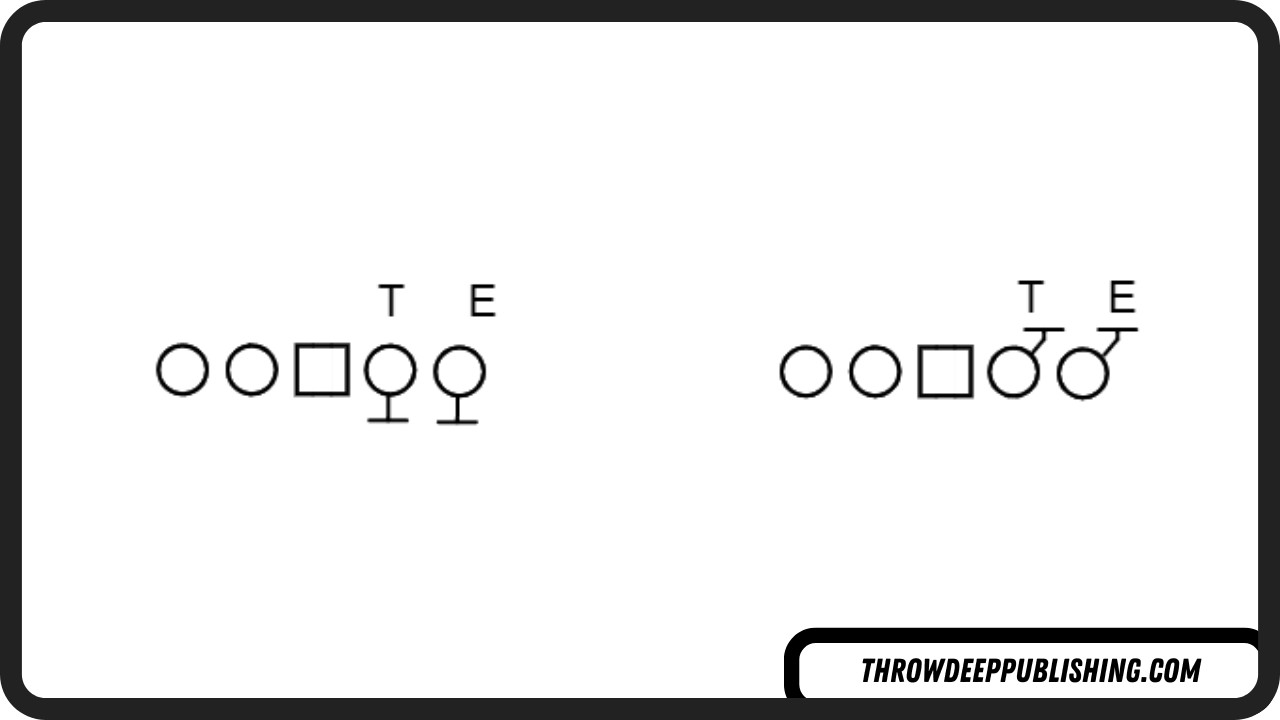 Base Block
Base Block
The Right Guard and Right Tackle engage in 1-on-1 blocks to protect the quarterback in a half-slide pass protection.
3. Reach Block
The Reach block aims to establish and maintain outside leverage on a defender, typically on the front side of a run play.
- Execution: The blocker takes a 45-degree angle step, targeting the outside shoulder (far point) of the defender.
- Usage: Commonly used on perimeter runs to ensure the defender cannot pursue the ball carrier.
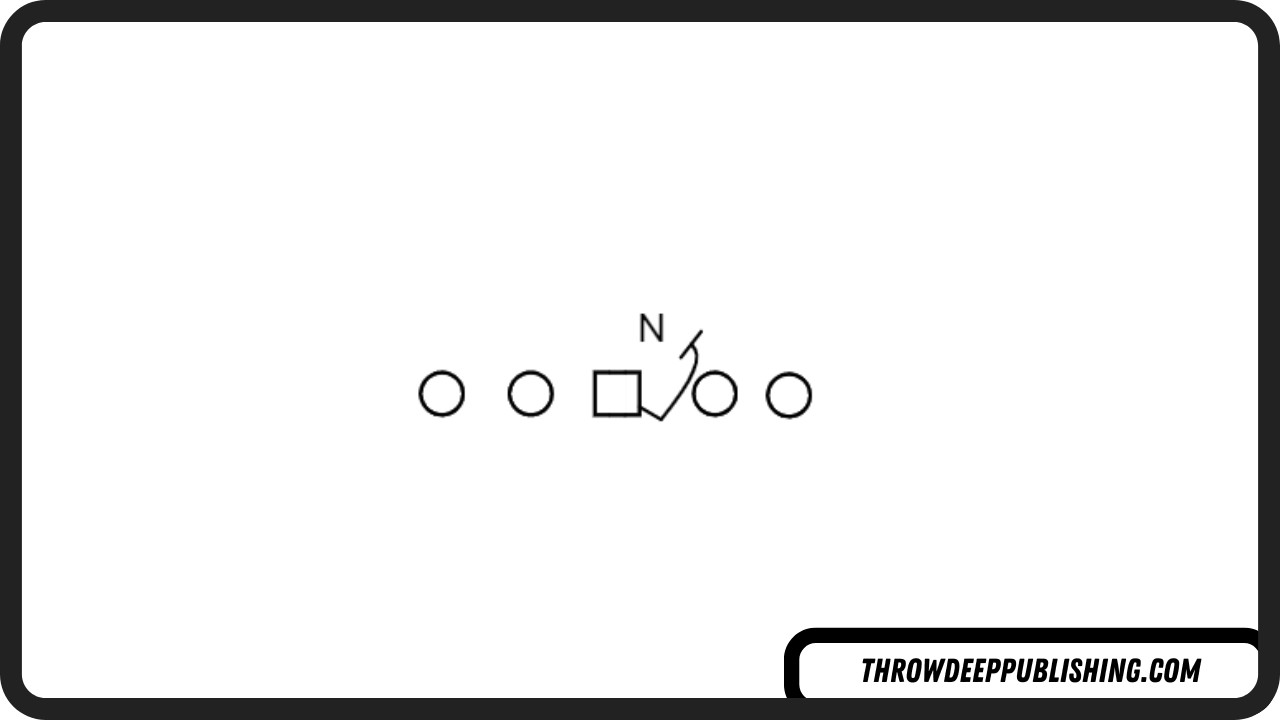 Reach Block
Reach Block
The Center reaches the Nose Tackle on an Outside Zone play, preventing him from disrupting the play.
4. Down Block
A Down block is an angle block on an inside defensive lineman or linebacker on the front side of a run play.
- Execution: The offensive lineman aims for the near shoulder of the defender, taking a 45-degree angle step down toward the defender.
- Advantage: The blocker has favorable pre-snap leverage, making it easier to control the defender.
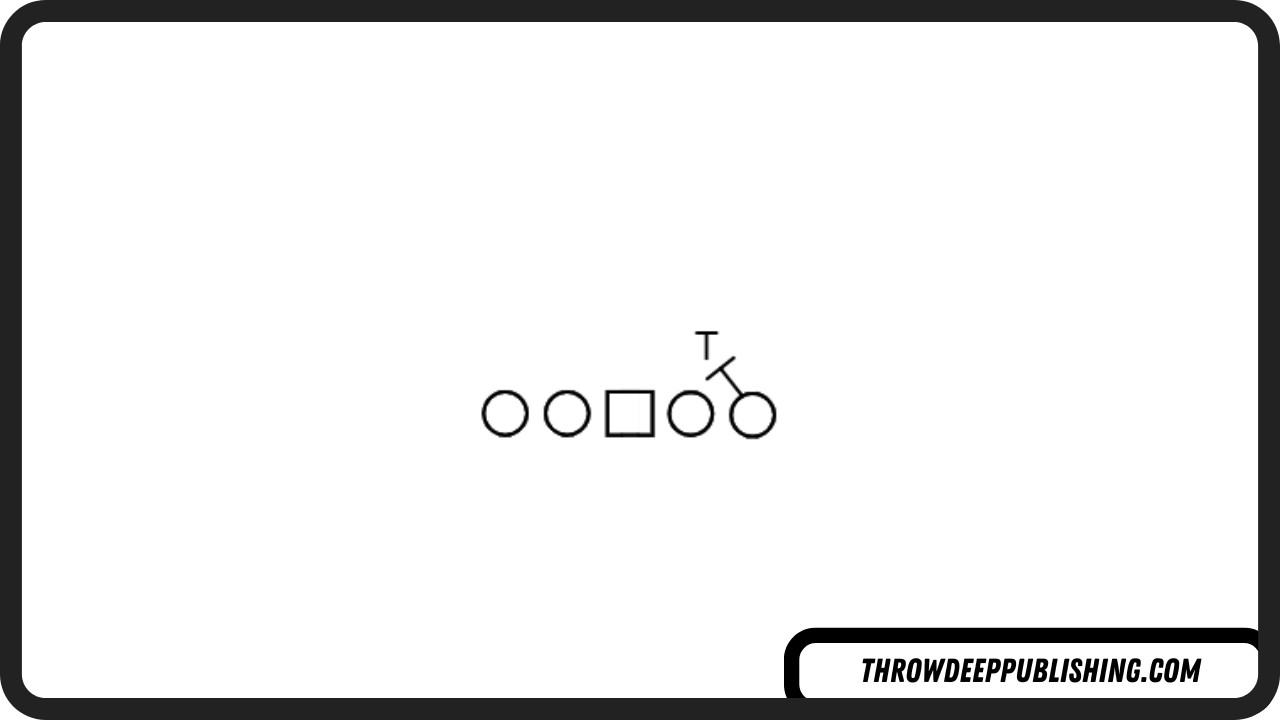 Down Block
Down Block
The Right Tackle blocks down on a 3-tech, helping to open a running lane to the offense’s right side.
5. Log Block
The Log block involves an offensive lineman pulling and sealing a defender inside to the front side of the blocking scheme.
- Execution: The blocker can react to the defender’s movement or execute a pre-determined block to force the defender inside.
- Objective: To create a running lane to the outside of the log block.
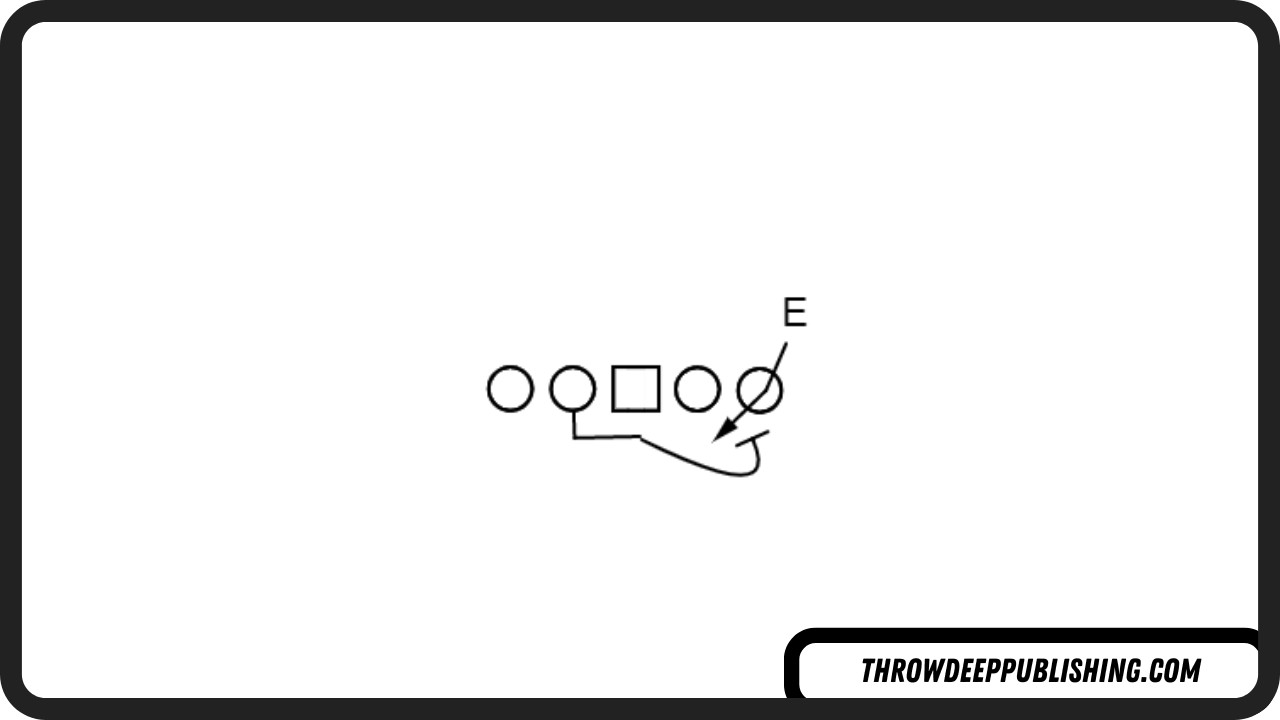 Log Block
Log Block
The Guard pulls and logs the edge defender, preventing him from disrupting the play and opening a lane outside.
6. Pull
A Pull is a maneuver where an offensive lineman moves from one position to another, often around another offensive player, to gain a leverage or numbers advantage.
- Types: Pulls can be used to add extra blockers at the point of attack or to create blocking on the perimeter.
- Plays: Commonly seen in plays like Power, Counter, Toss, and Buck Sweep.
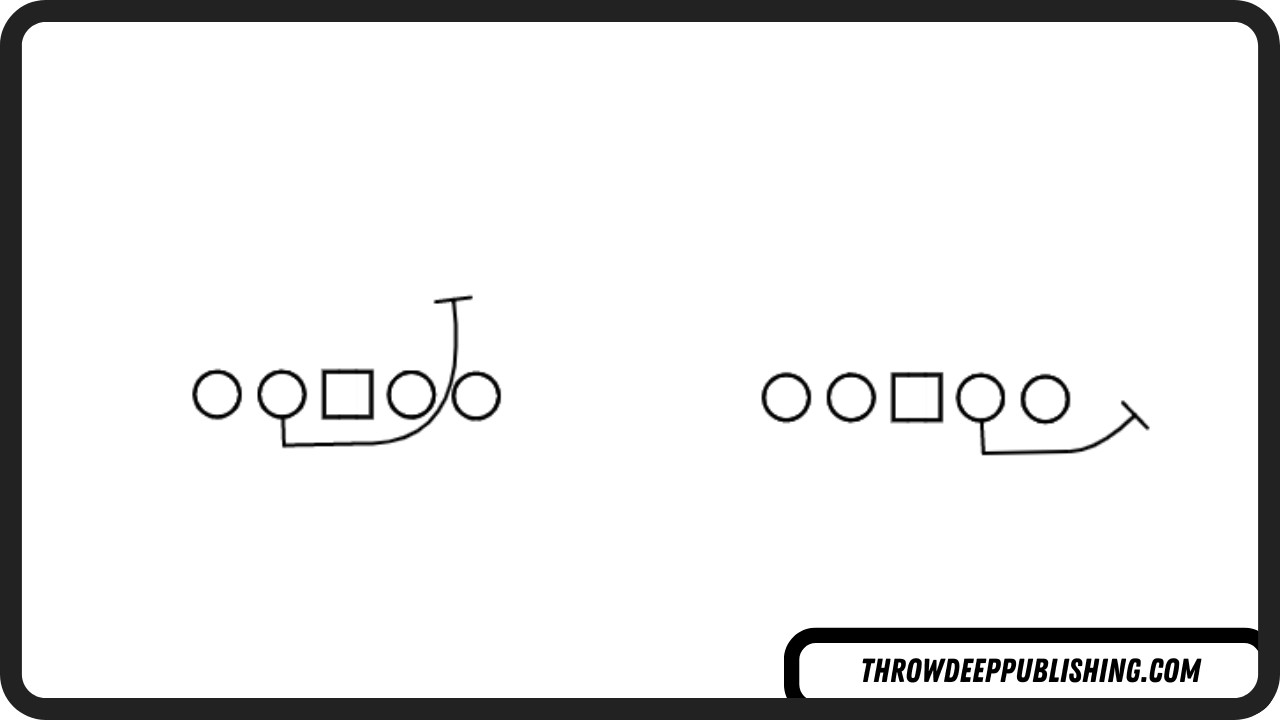 Offensive Lineman Pull
Offensive Lineman Pull
The Guard pulls around the Center to add an extra blocker, creating a numbers advantage at the point of attack.
7. Veer Block
The Veer block involves a drop step and rip through the defensive front, aiming to reach the second level and block linebackers.
- Usage: Primarily used in under-center triple option offenses.
- Requirements: Requires wide splits between offensive linemen to execute effectively.
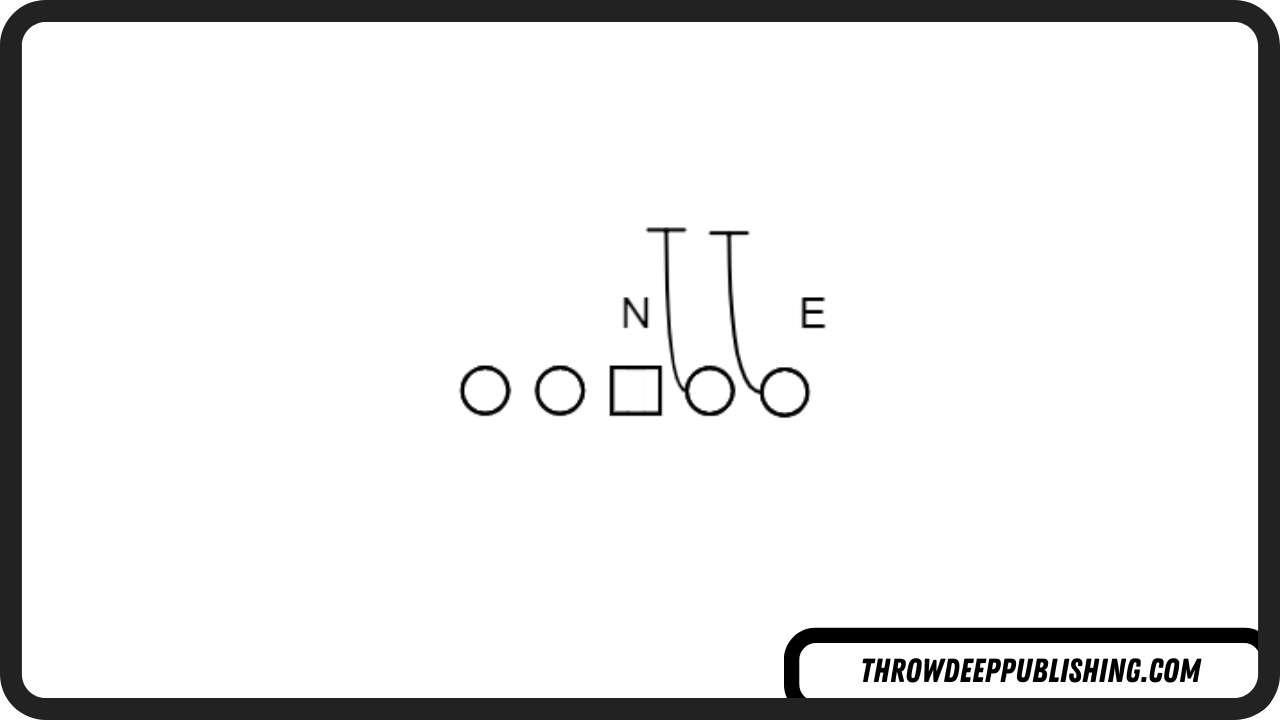 Veer Block
Veer Block
The Right Guard and Right Tackle execute Veer blocks, climbing to the second level to block linebackers.
8. Combo Block
A Combo block involves two offensive linemen working together to block a first-level defender before moving to block a second-level defender (usually a linebacker).
- Execution: The linemen emphasize either vertical or horizontal displacement on the first-level defender, depending on the play.
- Coaching Point: Linemen must keep their eyes on the second level while blocking the first level.
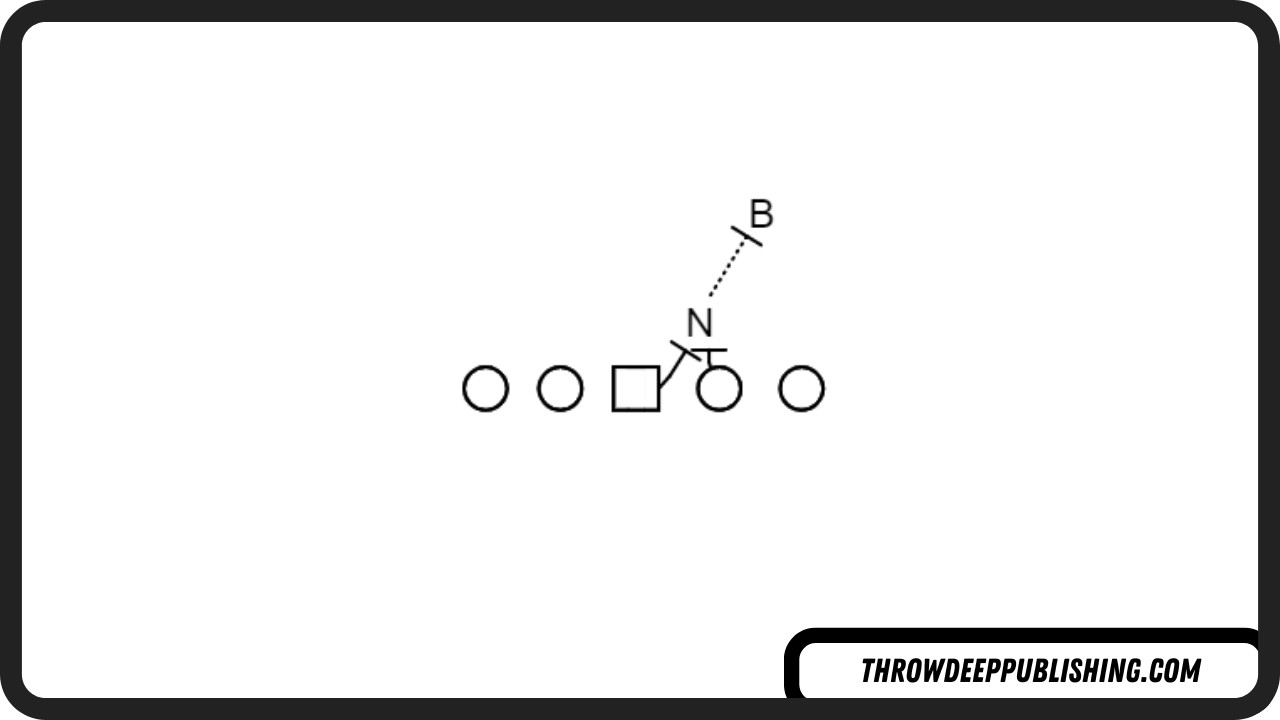 Combo Block
Combo Block
The Center and Right Guard combo block the Nose Tackle, then one of them moves up to block the Linebacker.
9. Drive Block
The Drive block is a 1-on-1 block in the run game where the blocker drives the defender off the line of scrimmage.
- Objective: To establish and maintain inside leverage on the defender throughout the play.
- Footwork: Can involve a drop step or an initial inside step, depending on coaching philosophy and the specific play.
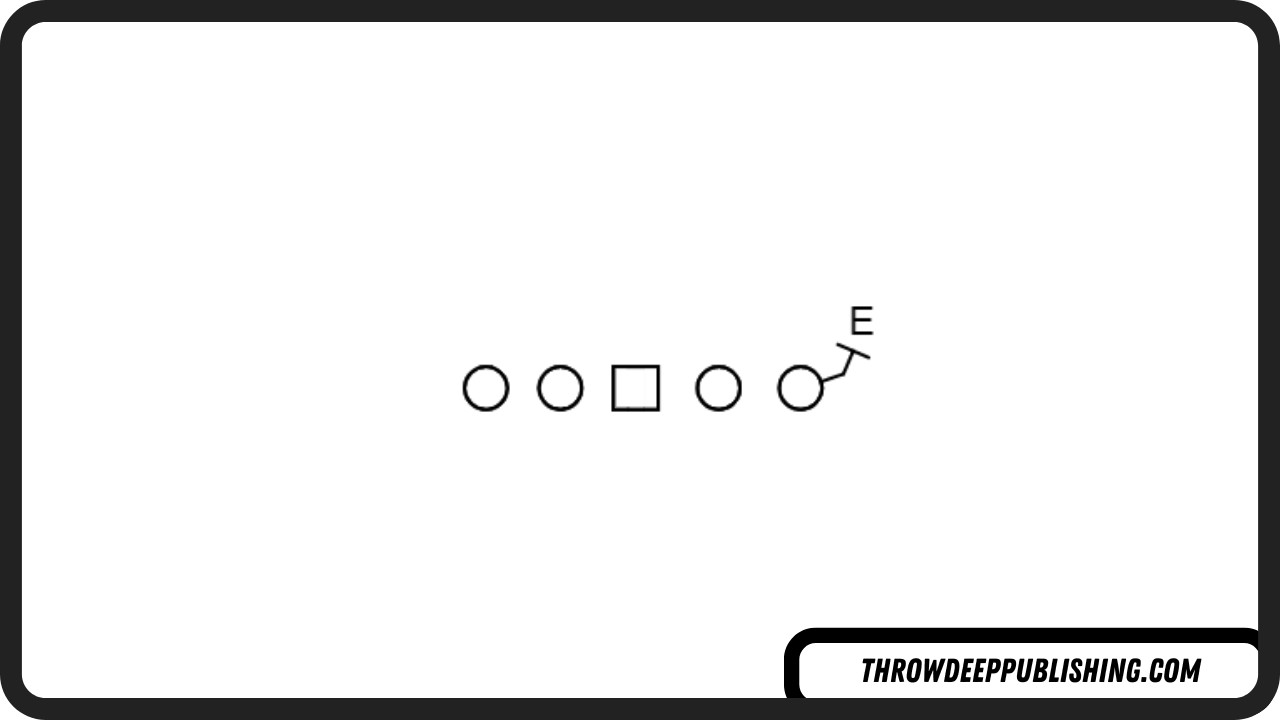 Drive Block
Drive Block
The Right Tackle drive blocks the Defensive End, creating a running lane for an inside run play.
10. Double Team Block
A Double Team Block is the initial phase of a combo block, where two offensive linemen focus on overpowering a single defender at the first level.
- Roles: The “post player” establishes initial contact, while the “trail player” adds to the block.
- Purpose: To move the defender off the line of scrimmage, creating space for the play.
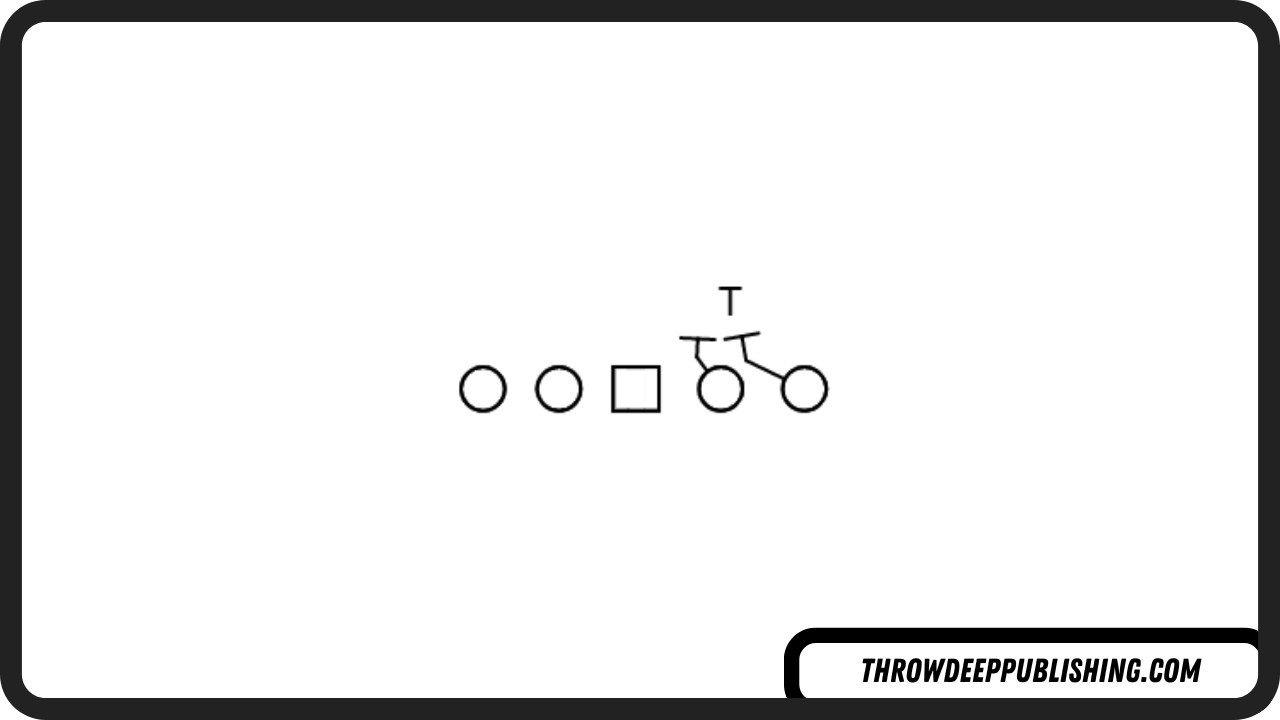 Double Team Block
Double Team Block
The Right Guard and Right Tackle double team the 3-tech, with the Right Guard as the post player and the Right Tackle as the trail player.
11. Scoop Block
A Scoop block is a specific type of combo block on the backside of a run play, similar to a reach block but executed by two players.
- Objective: To gain leverage on the far point of both first and second-level defenders.
- Technique: The linemen take deep drop steps, with one establishing initial contact and the other taking over to allow the first to climb to the second level.
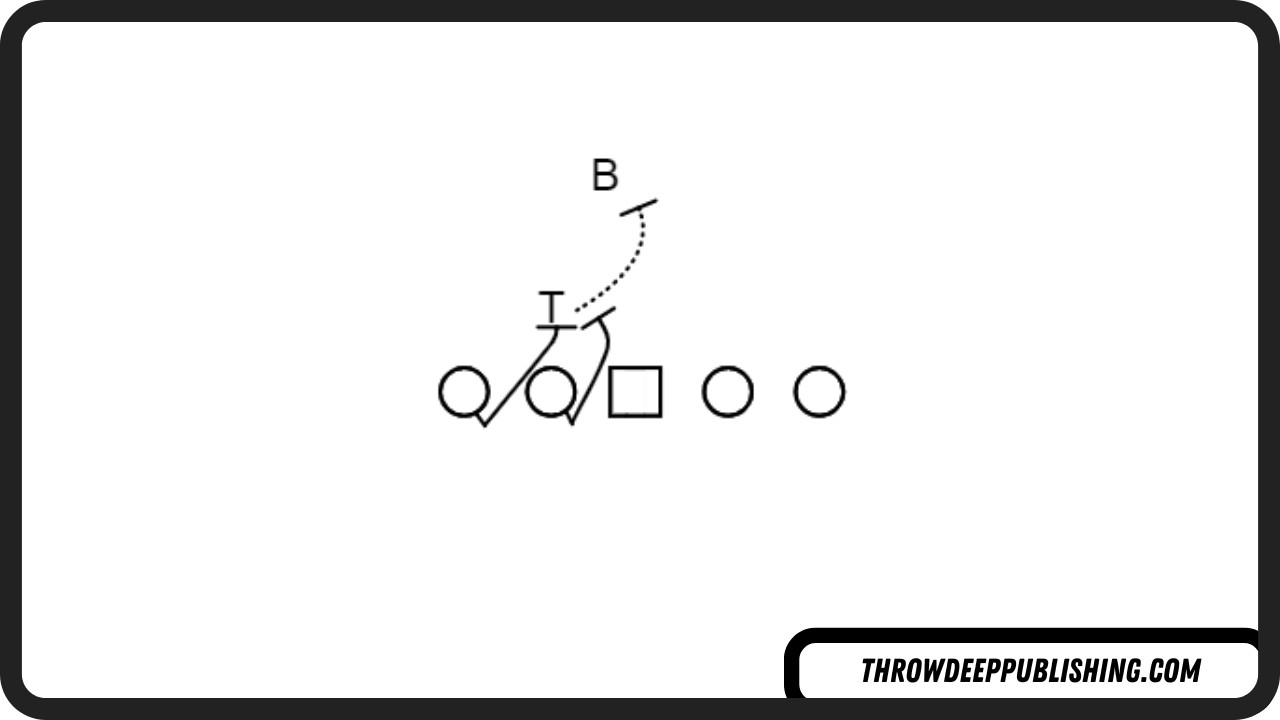 Scoop Block
Scoop Block
The Left Guard and Left Tackle scoop block the Defensive Tackle, with the Left Guard establishing initial contact.
12. Cut Block
The Cut block involves diving at a defender’s legs to get him on the ground.
- Usage: Used in both run and pass plays for various reasons, such as getting a defender’s hands down for a quick pass or stopping pursuit at the line of scrimmage.
- Technique: The offensive lineman takes an initial set to sell a pass, then dives at the near thigh of the defender.
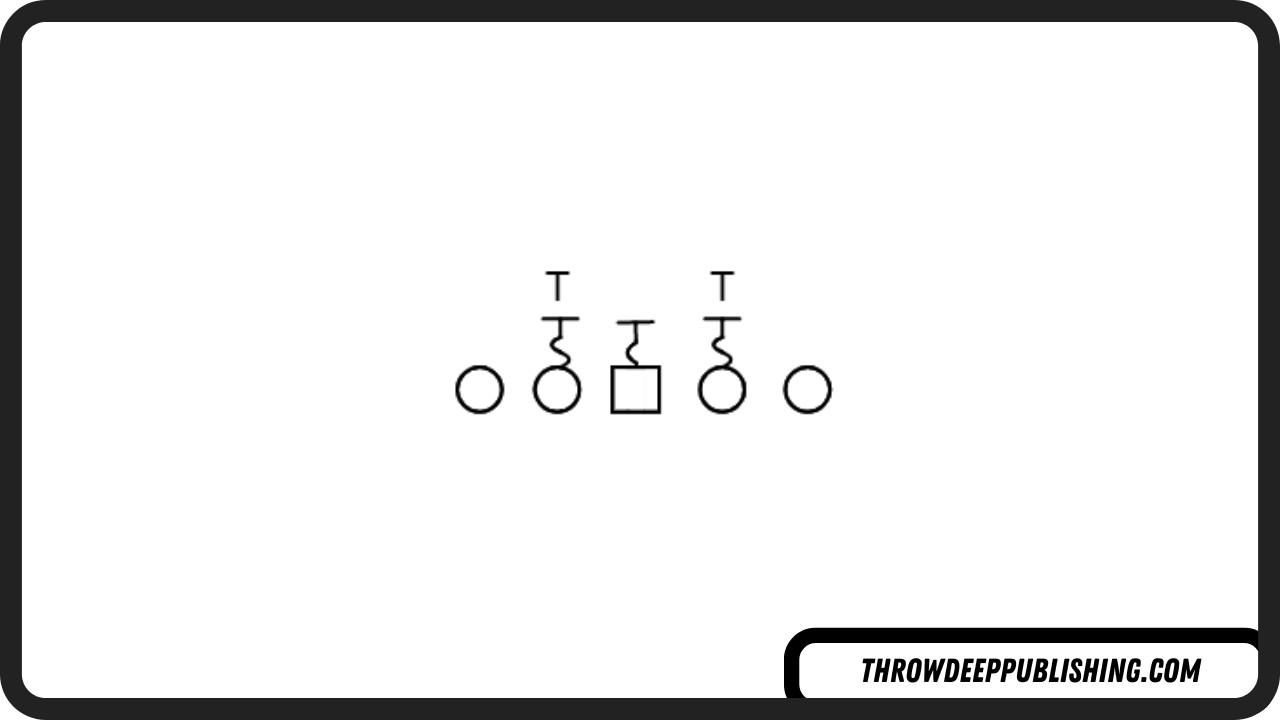 Cut Block
Cut Block
The Offensive Lineman cuts the defender, forcing him to extend his arms and preventing a strong pass rush.
13. Crack Block
A Crack block is where a perimeter player moves toward the core of the formation to block an interior defender, such as a linebacker.
- Usage: Commonly used on perimeter runs or quick screens.
- Technique: The perimeter player targets the upfield shoulder of the interior defender to prevent him from disrupting the play.
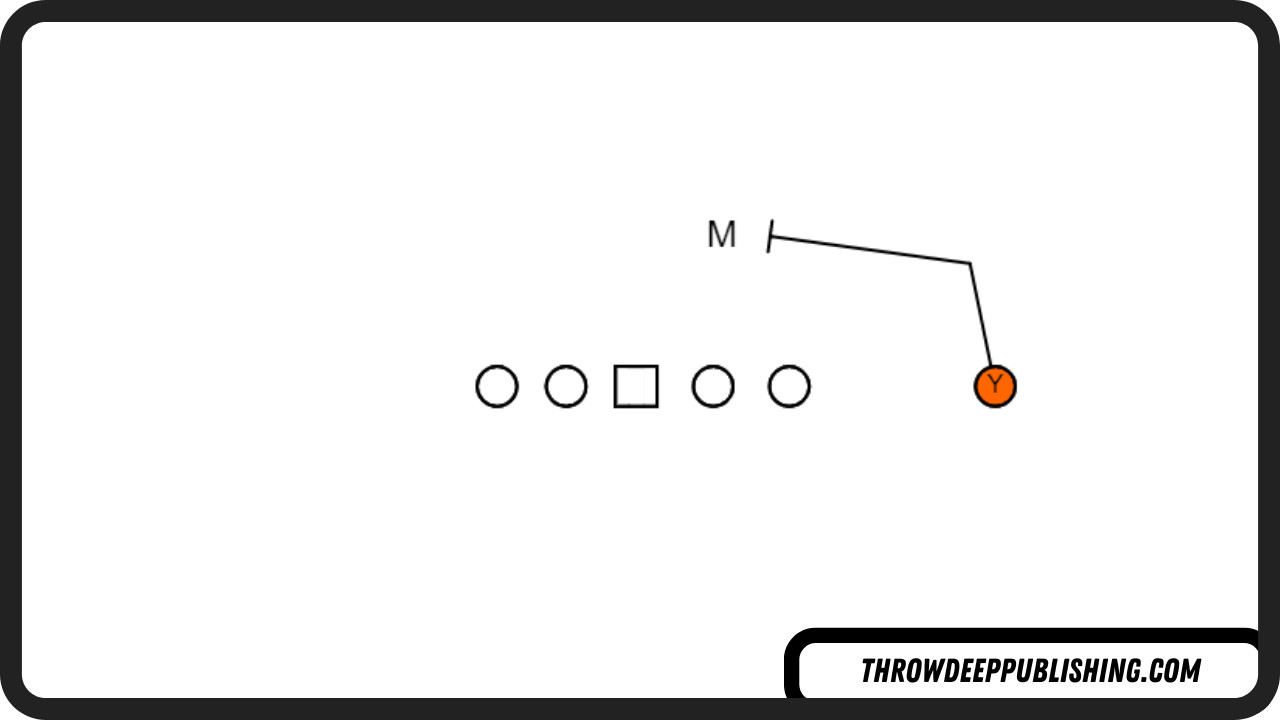 Crack Block
Crack Block
The slot receiver crack blocks the Linebacker, creating space for a perimeter run.
14. Kick Out Block
The Kick Out block is similar to the trap block but occurs one gap wider outside of the tackle.
- Execution: A blocker travels across at least one gap to an edge defender, establishing and maintaining inside leverage.
- Objective: To cancel out the edge defender and create a wider running lane in the C-gap.
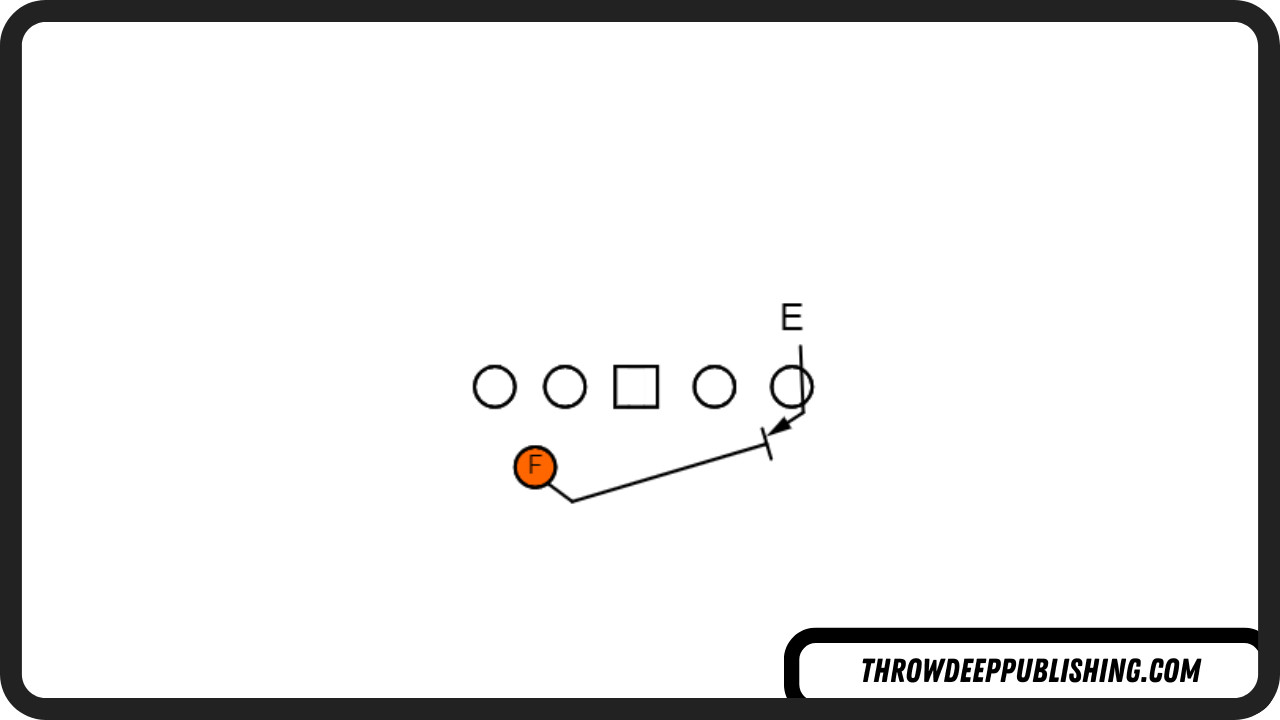 Kick Out Block
Kick Out Block
The H-Back kicks out the Defensive End, creating a running lane for the Tailback.
The Importance of Effective Blocking
Effective blocking is crucial for a successful offense in football. According to a study by ESPN, teams with a strong offensive line and effective blocking schemes are more likely to have higher rushing and passing yards, leading to more scoring opportunities. Good blocking not only protects the quarterback from sacks but also creates the necessary space for running backs to gain significant yardage.
Statistical Insights
- Pass Protection: A clean pocket allows quarterbacks more time to make accurate throws. According to Pro Football Focus (PFF), quarterbacks with good pass protection have a significantly higher completion percentage and fewer interceptions.
- Run Game: Effective run blocking results in higher yards per carry. A study by the NFL found that teams with a high percentage of “successful” run blocks average 1.5 yards more per carry than teams with poor run blocking.
The Role of Coaching
Coaching plays a vital role in developing effective blocking techniques. Coaches emphasize proper footwork, hand placement, and body positioning to ensure that offensive linemen can consistently execute their blocks. The University of Alabama, known for its strong offensive line play, incorporates rigorous drills and film study to refine blocking techniques.
How CAUHOI2025.UK.COM Can Help
At CAUHOI2025.UK.COM, we are committed to providing clear, accurate, and actionable information to help you better understand the game of football. Our resources are designed to simplify complex concepts and offer practical insights that can enhance your knowledge and appreciation of the sport.
- Comprehensive Guides: We offer detailed guides on various football topics, including offensive and defensive strategies.
- Expert Analysis: Our team of experts provides in-depth analysis of games and techniques.
- Interactive Content: Engage with our interactive quizzes and polls to test your knowledge and learn new facts.
If you have any questions or need further clarification on blocking techniques or any other football-related topic, don’t hesitate to reach out. Our goal is to be your trusted source for all things football.
FAQ: Football Blocking Techniques
1. What is the most important aspect of blocking in football?
The most important aspect is maintaining leverage and control over the defender to create space for the play.
2. How does pass blocking differ from run blocking?
Pass blocking focuses on creating a pocket for the quarterback, while run blocking aims to open running lanes.
3. What is a holding penalty in football?
Holding is an illegal tactic where a player impedes an opponent’s movement by grasping or hooking them.
4. What is the role of the center in blocking?
The center is responsible for making blocking calls and ensuring the offensive line works cohesively.
5. How can a player improve their blocking skills?
Consistent practice, film study, and strength training are essential for improving blocking skills.
6. What is a zone blocking scheme?
A zone blocking scheme involves offensive linemen blocking areas rather than specific players, allowing for more flexibility.
7. What is a pulling guard?
A pulling guard is an offensive lineman who moves from his initial position to block a defender on the move.
8. What is a screen block?
A screen block is used in screen plays, where the offensive line allows defenders to rush upfield before blocking them.
9. How do coaches teach blocking techniques?
Coaches use drills, film study, and repetition to teach proper footwork, hand placement, and body positioning.
10. What is the difference between inside and outside leverage?
Inside leverage means the blocker has positioned themselves inside the defender, while outside leverage means they are positioned outside.
Conclusion
Mastering blocking techniques is essential for success in football. Understanding the nuances of each block and how they contribute to the overall offensive strategy can greatly enhance your appreciation of the game. For more in-depth information and expert analysis, visit CAUHOI2025.UK.COM, your go-to source for all things football.
If you’re eager to dive deeper into the world of football, explore our other articles or reach out to our team for personalized assistance. We’re here to help you understand and enjoy the game to the fullest!
Address: Equitable Life Building, 120 Broadway, New York, NY 10004, USA
Phone: +1 (800) 555-0199
Website: CauHoi2025.UK.COM

